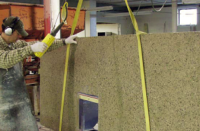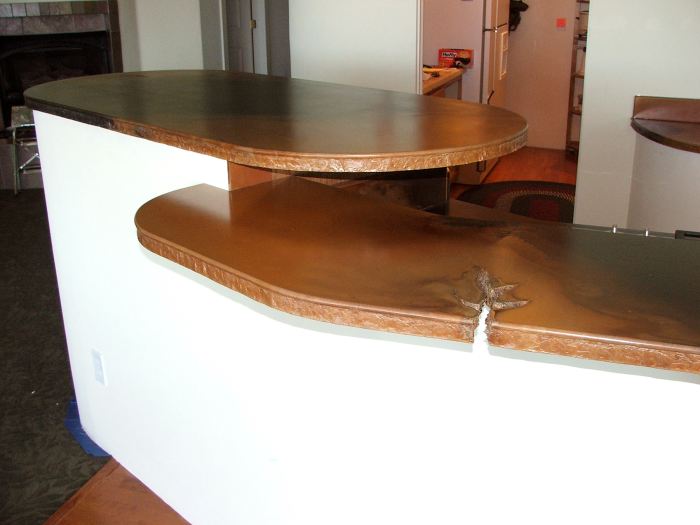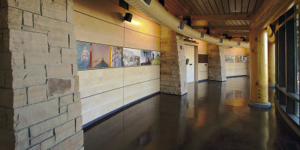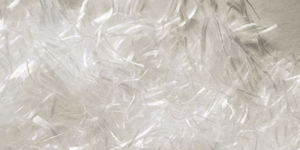When the use of a structural material — concrete — is scaled down from monumental slab to kitchen counter, what changes? Some things are the same, some things are smaller, and some things are just plain different. After all, very few customers want a miniature driveway poured on top of their kitchen cabinets. Differences in cement loading, aggregates and reinforcing mechanisms all set countertop mixes and installations apart from those used for traditional flatwork.
Aggregates and Cement
“Cement is the core of mix design for any application, balancing workability, strength and cost,” says Jeffrey Girard, P.E., president of The Concrete Countertop Institute in Raleigh, N.C. “Cement is the glue, the strength, but also the Achilles heel of concrete. Too much cement relative to aggregate tends to create excess paste. It is creamier, more workable, it behaves more like clay, but cement paste is what shrinks, causing cracking and curling. So cement loading is the delicate balancing act that all engineers who design concrete mixes have to perform.”
The amount of cement required is affected by the surface area of the aggregates in a mix. Aggregates in countertops are by necessity smaller, with the largest typically 3/8 inch to 5/8 inch. Mike Heidebrink, president of Cheng Concrete, explains: “Each individual aggregate has a specific surface area. The smaller the aggregate, the greater the total combined surface area. The amount of cement you add to the aggregate is really (based on) a calculation of surface area. The function of cement is to coat the surface of all the aggregates.”

Chris Franzen, training consultant for SureCrete Design Products, adds: “The smaller the particle, the more surface area there is per volume. That means you need more water to wet the surface area. So aggregate size is a big part of the concrete recipe, even though it does not react chemically.”
Accounting for excessive water
If there is excessive water, the cement not only cures, but must dry out as well, says Steve Schatz, CEO of Buddy Rhodes Concrete Products LLC. “This contributes to shrinking, curling and cracking. All three are bad for counters. Use less water if you can.”
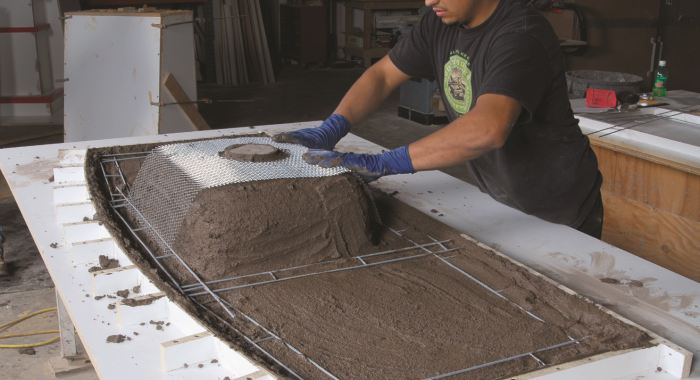
Some mix designs incorporate water reducers to counter the negative impact of excess water. For example, the Cheng Pro-Formula Mix for concrete countertops includes a plasticizer that Heidebrink says “makes it behave wetter than it really is.” The SureCrete product is another example of a mix that incorporates a modifier to protect against excess water.
Reinforcing countertops
Concrete has very high compressive strength, but tensile strength — the ability to bend and flex without cracking or breaking — is another story. You must reinforce the concrete bridge deck appropriately to prevent it from cracking down the middle. On the scale of a countertop, where a thin slab may be supported only at the edges or cantilevered with no support, the same is true.
Countertop reinforcement is an evolving issue, with different mechanisms still being studied and proposed. Shrinkage cracks are also undesirable in countertops, but tensile strength is a bigger issue, and reinforcement allows the concrete to flex without cracking.
Currently, the most active line of inquiry involves fiber reinforcement. Different types of fibers perform different functions in concrete. Perhaps most familiar are fibers. Contractors use these to control shrinkage in flatwork while it is fresh. Typical fibers used for this purpose include nylon, polypropylene and cellulose. “With countertops, drying shrinkage is best controlled by cement paste content, aggregate gradation and good curing practices, not by fibers,” notes Jeffrey Girard.
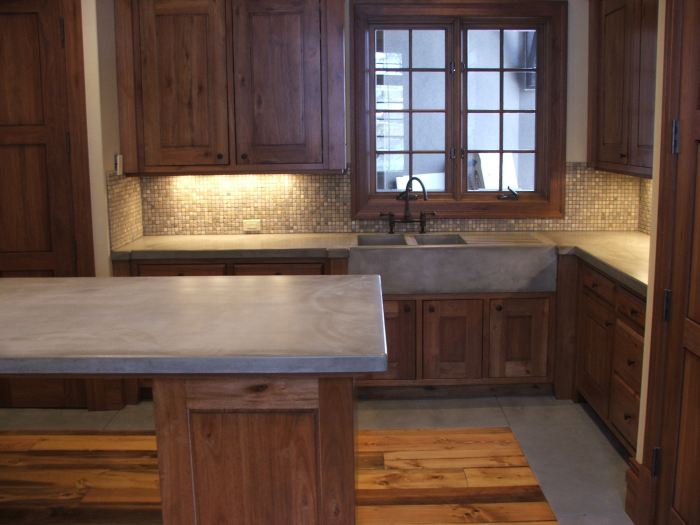
Nippon Electric Glass America Inc., based in Grand Prairie, Texas, supplies glass fibers for various concrete applications, including glass-fiber reinforced concrete (GFRC). “We manufacture a wide variety of fiber lengths and sizes, each designed for a specific purpose,” says technical sales representative Mike Cook. “There is one designed specifically to control shrinkage cracks. Others are used for reinforcement.” The use of these fibers is made possible by the development of alkali-resistant glass. “You can’t put traditional E-glass in Portland cement — the alkalis will attack the glass,” Cook explains.
The importance of glass fibers
Some designers and engineers remain unconvinced that glass fibers can replace mechanical reinforcing such as rebar or, scaled down for countertops, ladder wire or wire mesh. “Glass fibers and others used in countertops are stiff — stronger than steel,” Girard says. “They act like rebar, but they are discontinuous. They don’t replace reinforcing, but they do redistribute stresses in the concrete. As long as these stresses aren’t high enough to break the fibers or free them from the concrete, they continue to function. But reinforced concrete will always be stronger because it takes all the load and it is continuous.”
Mike Cook is a former countertop contractor. His assignment with Nippon Electric Glass is to consult with concrete contractors working with GFRC. He has a different point of view. “I started out using rebar as structural reinforcement, and was very limited as to what I could do because of seams, length limitations, extra labor and materials around thin areas like sink corner knock-outs,” he says. “With GFRC, glass fiber is a replacement for rebar. We are able to accomplish projects you never could with rebar. You can go much thinner with GFRC. If you want the massive look, you can make a shell or encapsulate a foam core to keep it light. Or you can have longer spans and thinner slabs.”
According to MNL-128, a “Recommended Practice” from the Precast/Prestressed Concrete Institute (PCI), the fibers add flexural, tensile and impact strength. Cook claims that regular concrete achieves flexural strength of 400 psi, whereas GFRC reaches 2,000 to 3,500 psi in 28 days. “The time of greatest stress for a concrete countertop is during delivery and installation,” Cook says. “This is where the high flexural strength really pays off and opens up the possibilities.”
The future of the countertop industry
Jim Ralston of Urban Concrete Design, based in Mesa, Ariz., believes GFRC is where the countertop industry is headed. “I’ve been working with GFRC since 1986,” he says. “GFRC outperforms ‘wetcast’ in most all aspects of production, from setup to install.” He is so confident of this performance that he gives customers a lifetime structural warranty on his products.
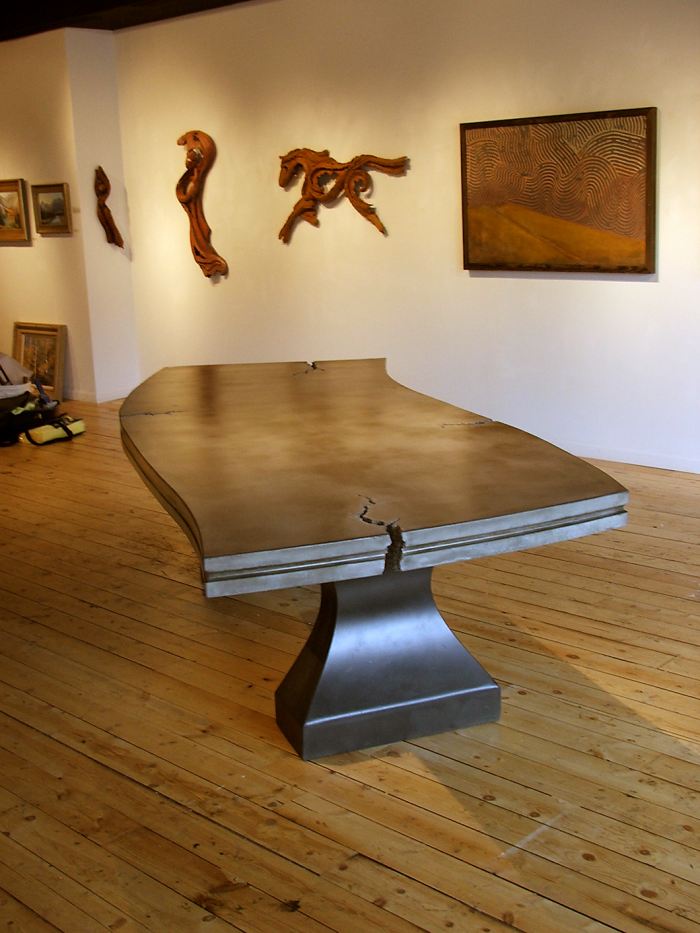
Those who choose not to rely on fibers employ mechanical reinforcement to obtain optimal tensile strength. “Fiber can replace rebar if the fiber is heavy enough, like that in GFRC,” Heidebrink explains. “The disadvantage comes if you are polishing. You don’t want to see the fiber. So that’s where ladder wire or welded wire mesh come in handy. They are inexpensive and readily available.”
“At Buddy Rhodes, our typical counter thickness is only an inch and a half,” says Steve Schatz. “If we tried to reinforce with standard steel (rebar), the rigidity would not allow the mix to expand and contract as it cures, and the rebar would actually cause stress fractures in the thinner slab. We use Ladur wire in flat pieces and expanded diamond wire mesh in curved applications.”
Reinforcement
Heidebrink and Girard share the opinion that where you place the reinforcement is more important than the reinforcing material itself. “You want the reinforcing to be in the bottom third of the countertop,” Heidebrink says. “If you support a slab on sawhorses at the ends, you would see it bend down in the middle. This means the top half is in compression, but the bottom half is in tension — pulling apart. Concrete doesn’t have good tensile strength, but steel does, so put steel where it can help.”
Girard could not agree more. “Reinforcement should never, ever, ever go down the middle. The underside of a counter is being stretched the most in pure tension — that’s where the reinforcement needs to go. There is no tension in the middle of the slab, so reinforcement placed there does nothing.”
Small but scientific
It is obvious that huge concrete projects like dams, highways or bridges require extensive engineering. But even on the smaller scale of countertops, understanding science and engineering is important. That is why so much research continues on mix design and reinforcement. Girard sums it up this way: “Concrete countertops are very high-value products. Customers care only whether they perform. The more people want in terms of design — fewer seams, longer spans — the more you need to understand what you are doing.”
The best way to do that is to rely on the experts. Contractors serious about this business should find a mix they like. They should also find a supplier or a consultant they can trust. Additionally, they should take advantage of training opportunities. Lastly, they should experiment with materials and techniques until they can deliver the best outcomes for customers.

